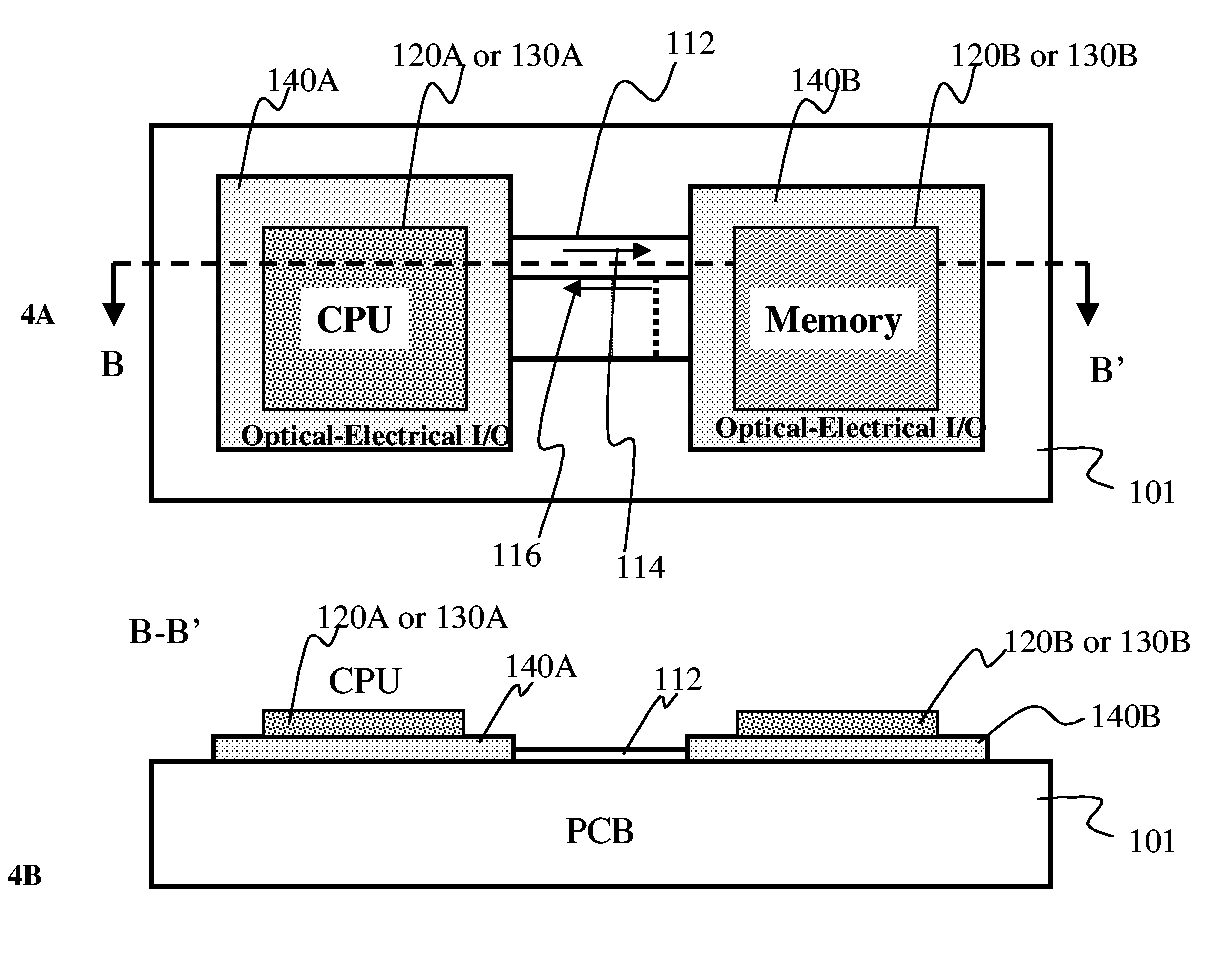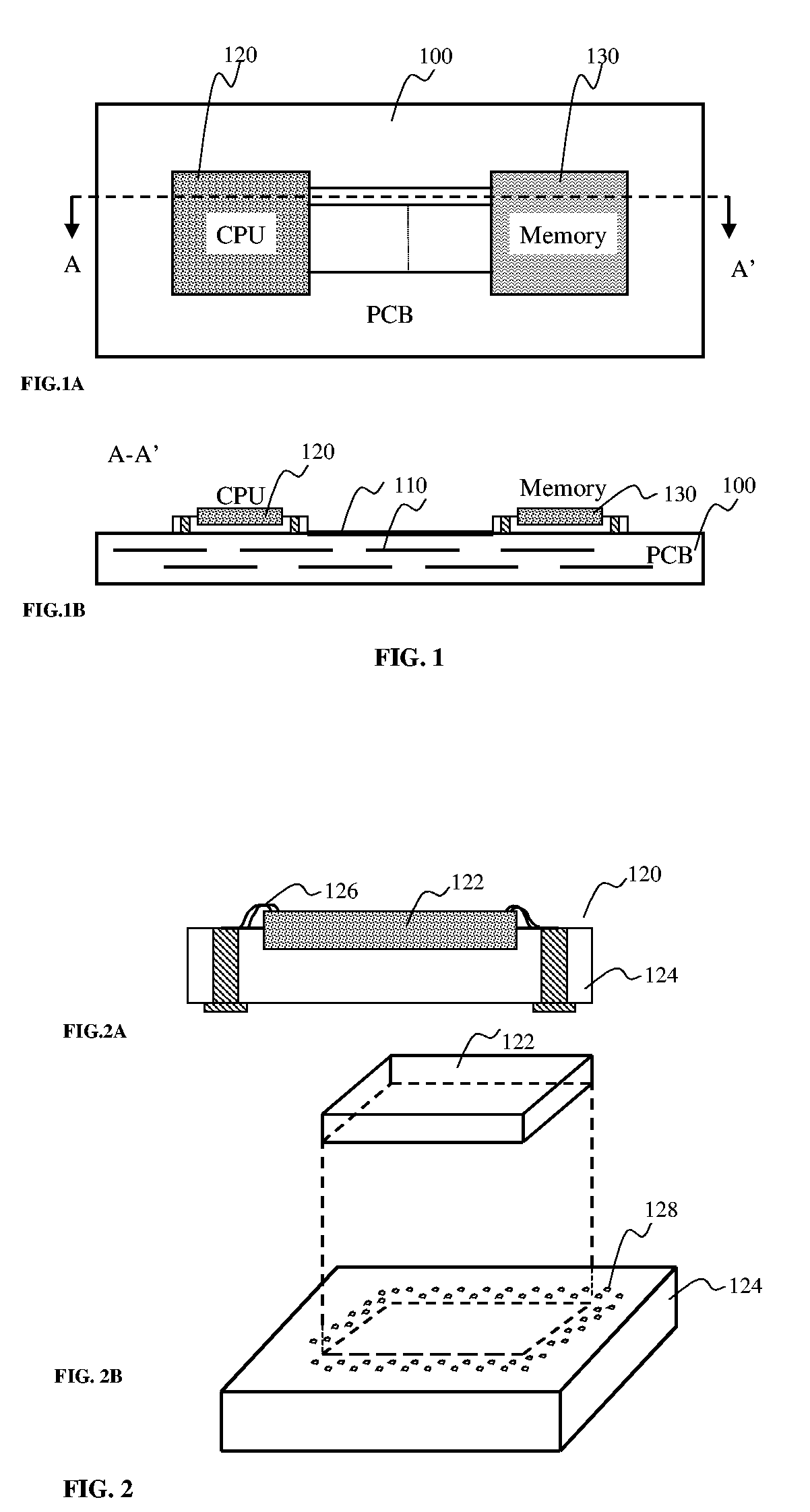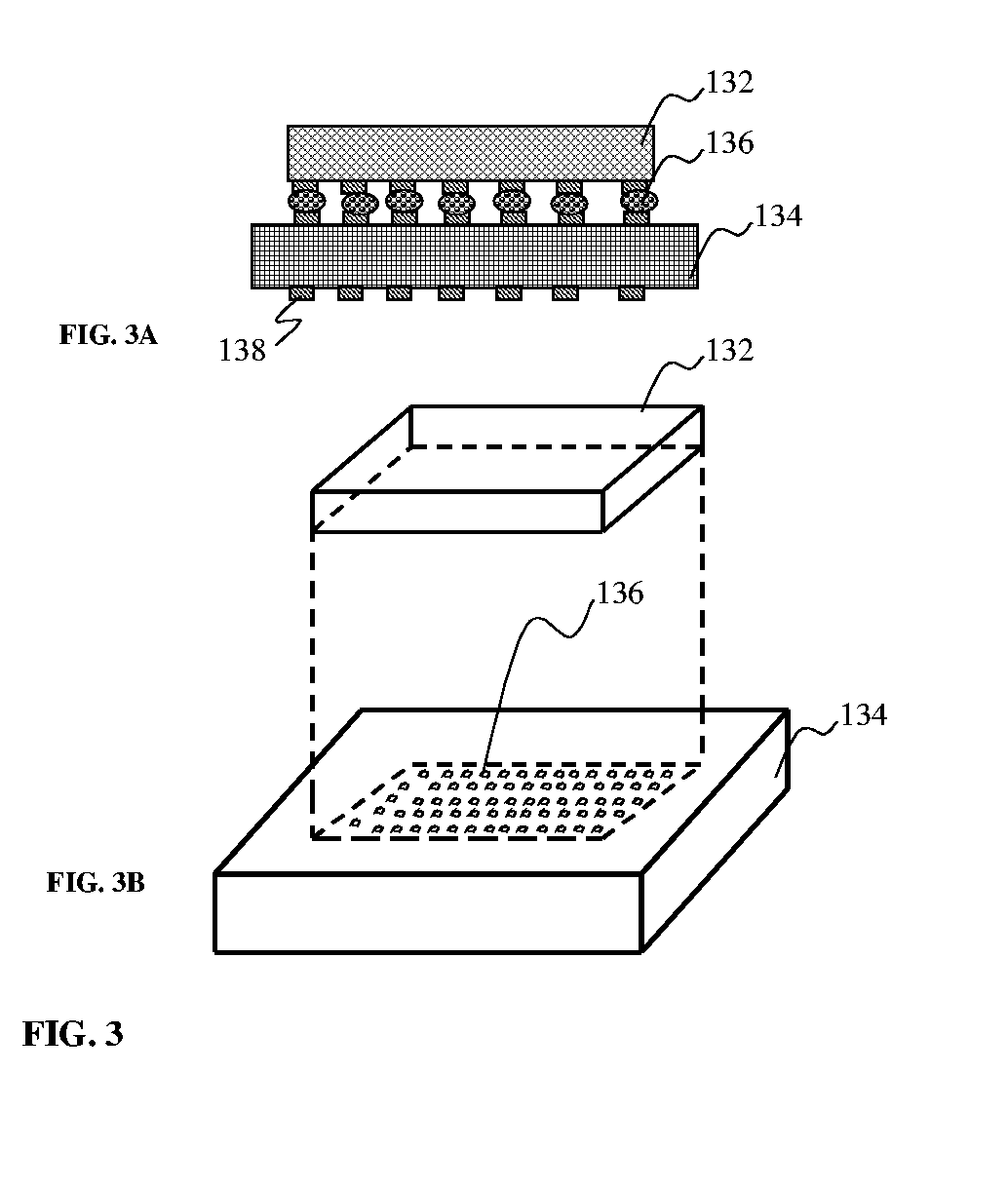Stackable optoelectronics chip-to-chip interconnects and method of manufacturing
a technology of optoelectronics and chip-to-chip interconnection, which is applied in the direction of sustainable manufacturing/processing, instruments, and final product manufacturing, can solve the problems of increasing the difficulty of interconnection on the printed circuit board (pcb), noise from off-chip electrical signals, and achieving higher data rates. achieve the effect of convenient stacking/mounting
- Summary
- Abstract
- Description
- Claims
- Application Information
AI Technical Summary
Benefits of technology
Problems solved by technology
Method used
Image
Examples
first embodiment
[0089]An important point of optical interconnects system for high speed off-chip connection is the idea that essential part, an optical-electrical (hereafter mentioned as “O-E”) board is required and it is to be compatible and easily stackable with the available chip package and also PCB. To make the cost-effective, the board should be friendly for the manufacturing as the electronics components.
[0090]In off-chip interconnection, the signal between the chips may be conveyed electrically through the wire or optically through the optical media. Especially, the idea is to transfer the high-speed signal from one chip to another after conversion into optical from electrical and vice-versa for the receiving signal. The low speed signal connection and the rest of the others connection such as ground and power line connections are done through the electrical wire. When the signals are conveyed by light (i.e. optically), the optoelectronics devices provide the conversions between the light ...
second embodiment
[0095]FIG. 6 is a plan view, showing from the optical part mounting side (bottom), the O-E board 140 according to the The O-E board 140 for interconnects is included a singulated chip (with package) 120 and a singulated portion of the circuit 152. The O-E board 140 and the circuit 152 have peripheral outline substantially similar to that of the package 120. The circuit 152 includes a substrate 150, which comprises with insulating, flexible material or rigid material. The flexible material could be any kinds of polymer material, which includes polyimide, polyester, epoxy, urethane, polystyrene, silicon or polycarbonate. The substrate 152 also includes the rigid substrate. Suitable materials for the rigid substrate cover ceramic materials including aluminum nitride, aluminum oxide, and boron nitride. The material having high thermal conductivity and high dielectric constant also covers this substrate material. The thickness for the substrate 152 can be 20 to 500 um.
[0096]The circuit ...
PUM
 Login to View More
Login to View More Abstract
Description
Claims
Application Information
 Login to View More
Login to View More - R&D
- Intellectual Property
- Life Sciences
- Materials
- Tech Scout
- Unparalleled Data Quality
- Higher Quality Content
- 60% Fewer Hallucinations
Browse by: Latest US Patents, China's latest patents, Technical Efficacy Thesaurus, Application Domain, Technology Topic, Popular Technical Reports.
© 2025 PatSnap. All rights reserved.Legal|Privacy policy|Modern Slavery Act Transparency Statement|Sitemap|About US| Contact US: help@patsnap.com



